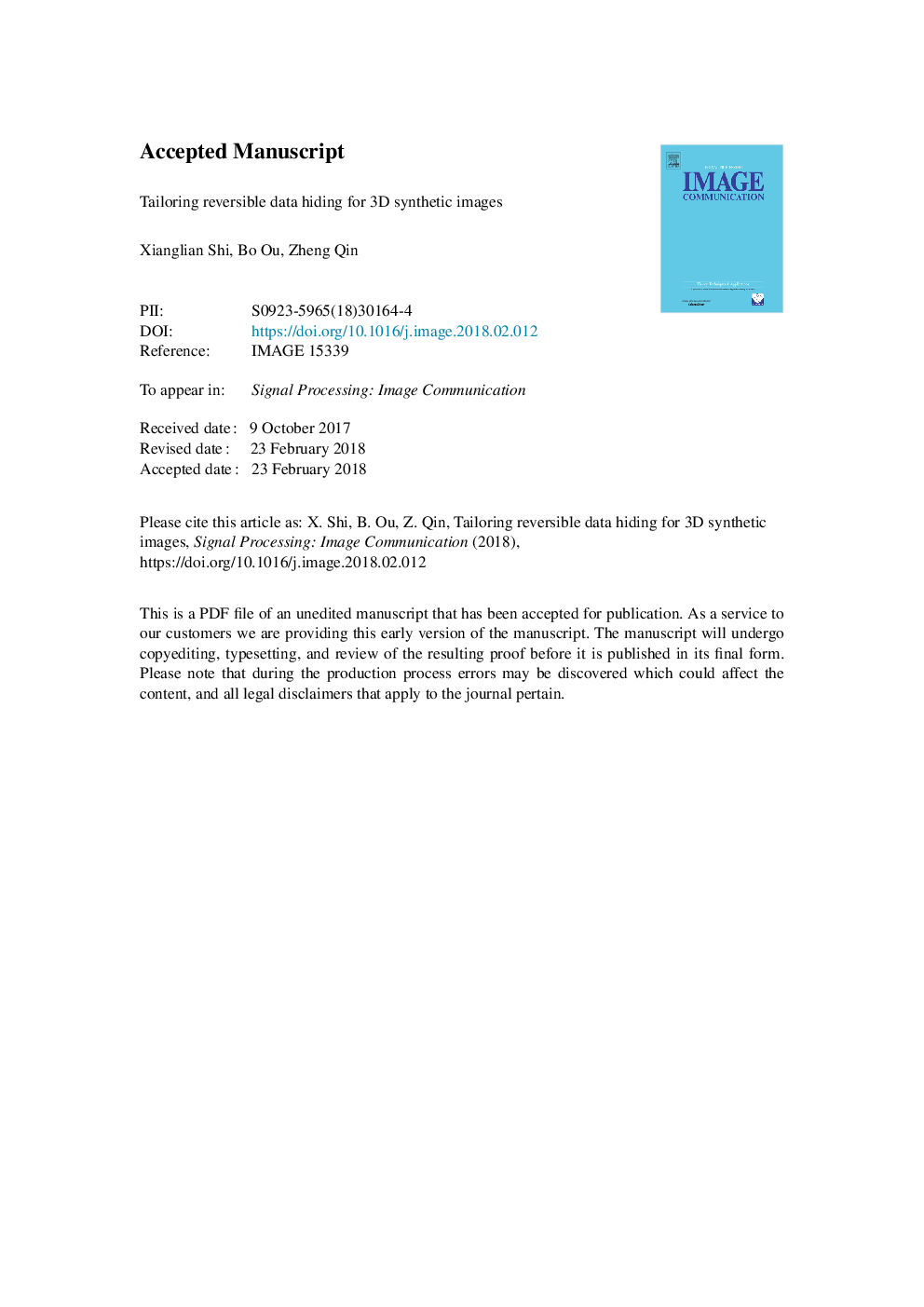| Article ID | Journal | Published Year | Pages | File Type |
|---|---|---|---|---|
| 6941562 | Signal Processing: Image Communication | 2018 | 27 Pages |
Abstract
In this paper, we proposed a reversible data hiding (RDH) method for three-dimensional (3D) synthetic images based on the depth-no-synthesis-error model (D-NOSE). By using the depth-image-based rendering technique, the 3D image can be synthesized from a 2D color image and its corresponding depth map to provide the viewer a depth perception. Recently, a 3D-based RDH method is proposed to modify the depth map while still preserving the perfect 3D image synthesization. However, it has not fully exploited the pixel mapping relations in the synthesization, resulting in an insufficient capacity. Moreover, the optimal 3D visual quality is not discussed. To compensate this, we propose to improve the capacity and the 3D visual quality. The proposed method extends the pixels expansion toward two directions to fully exploit the allowable range, and can adjust the pixel modification to control the capacity. Furthermore, for a given capacity, the optimal baseline can be selected for a better 3D visual quality. Experimental results show that the proposed method outperforms the previous methods in terms of capacity and distortion, and a better 3D visual quality can be obtained as well.
Related Topics
Physical Sciences and Engineering
Computer Science
Computer Vision and Pattern Recognition
Authors
Xianglian Shi, Bo Ou, Zheng Qin,
